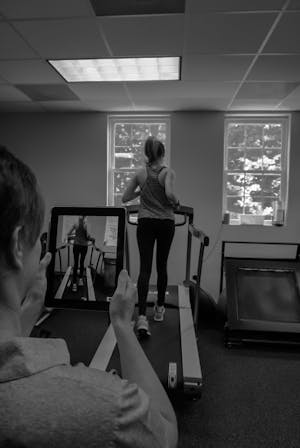Running Analysis

Running injuries are seldom the result of an acute or sudden event. Instead, they are usually the result of cumulative micro-trauma also known as repetitive overuse injuries.
Sixty-five percent of all runners experience a running injury in a given year according to Runner’s World.
Common running injuries that may require the attention of a physical therapist include:
- Calf (gastrocnemius/soleus) strains
- Plantar fasciitis
- Hip bursitis
- Iliotibial Band Friction Syndrome
- Patellofemoral pain (kneecap problems)
- Shin splints
- Hamstrings strains
- Tibialis posterior tendonitis
A Thorough Physical Therapy Evaluation is Where Treatment Begins
Runners can suffer from a variety of injuries and there are numerous reasons why a runner might be experiencing pain. The first thing your physical therapist will do is perform an evaluation. This consists of the following:
- Your past medical history
- Your current complaints
- What makes the problem better and worse
- Any past or present treatment
Then a thorough physical exam is performed including:
- Strength
- Endurance
- Flexibility
- Foot, knee, hip, pelvis mechanics
- Observation and analysis of your running style (gait analysis)
- Examination of your footwear and any orthoses if used
How a Physical Therapist can Help
Physical therapists can help runners recover from injuries as well as decrease the chance that they will return. Improving the following can be of assistance:
- Running technique
- Thigh and calf strength
- Hip/core stability
- Quadriceps, hamstrings, and calf flexibility
- Foot mechanics (decreasing excess pronation)
- Shock absorption
- Training strategies (frequency, training time, distance, environment)
Conservative care for running injuries is important. Runners that push through pain can cause long-lasting injuries that may limit training and performance. Seeing a physical therapist that is training in the evaluation and treatment of running injuries can help.
